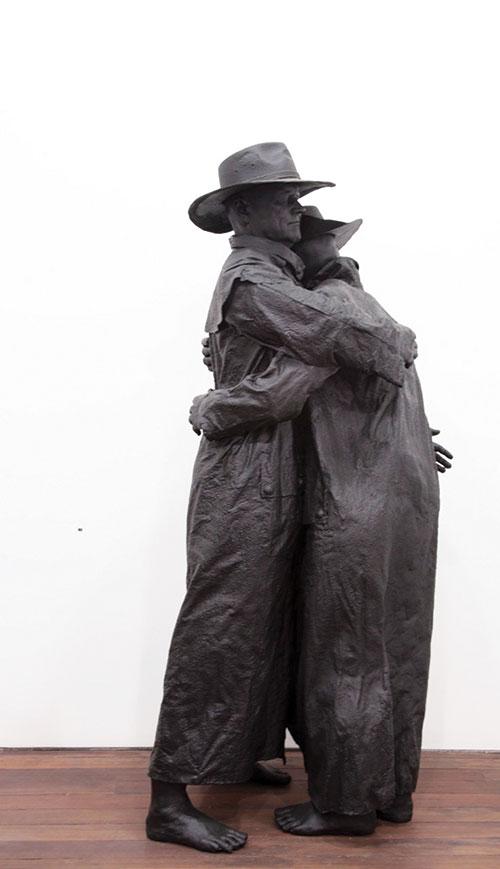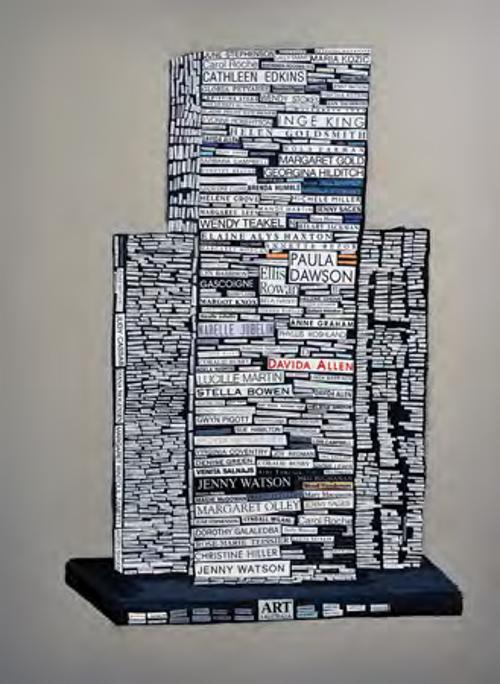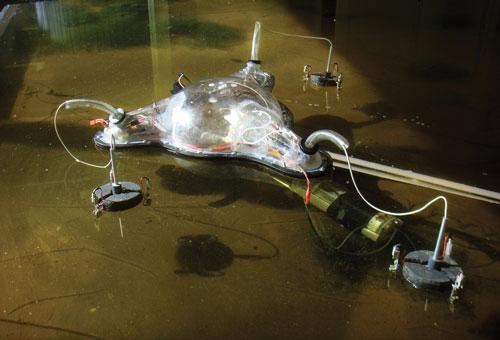
He was the perfect surfer riding the perfect wave with perfect timing,' my Uncle tells me. The person in question is former Labor Prime Minister Gough Whitlam. Present at 'It’s Time’, the 1972 Labor campaign launch, at Blacktown Civic Centre and attempting to visit Whitlam on the night of his electoral win at his home in Cabramatta, my uncle recounts a story of an enigmatic leader who made the equalisation of opportunity part of the Australian psyche.
‘That night of the election and being at his speech at Blacktown in 72 will stay in my memory forever.’
There is a certain euphoria around the Whitlam Labor campaign of 1972. Labor were radical compared to the previous 23 years of conservative governments whose policies were founded on maintaining class and cultural hierarchies.
Blacktown Arts Centre’s exhibition It’s Timely, in conjunction with the Whitlam Institute, reflects upon this period, finding its parameters in Whitlam’s 1972 and 1974 speeches, both of which took place at Blacktown Civic Centre. Curated by Gary Carsley and Paul Howard, the exhibition examines the essence of Australia’s cultural and social reinvention through personal reflection, focusing on language and storytelling. Whitlam created a vision for Australia where inclusive policies on health, education and services became the norm. Artists within the exhibition directly address his speeches and the notion of change while others examine the nostalgia of the Whitlam story.
An encapsulating orator, Whitlam was the first leader to acknowledge the thriving region of Blacktown. Carsley describes it as the ‘crucible of Australian national identity’. Whitlam later spoke about choosing Blacktown for the ‘It’s Time’ launch, at the opening of the Blacktown Expo in 1993, as ‘it represented, symbolised even, the new outer suburbs of Sydney, Melbourne and Brisbane...It typified all the urban policy failures of the time’.
Threaded throughout It’s Timely is a sense of storytelling. As a visitor I felt included, reminded of the significance of these changes in my own life, growing up in the western suburbs. Each work has an essence of personal reflection, drawing out what the short-lived Labor government meant for each artist. As with any personal narrative, there are elements of happiness and hope as well as loss, mourning, despair and reflection.
Echoing Whitlam’s focus on inclusion, local photographer Anthony Berbari is exhibiting alongside well-established artists such as Simryn Gill and Deborah Kelly. Running a photographic business in the heart of Blacktown, Berbari’s commissioned work Now and Then encapsulates the tremendous sense of hope of those present at the launch in 1972. Berbari breathes new life into portraiture, capturing the energy and faith of people. These black and white portrait photographs are accompanied by their sitter’s story, building a personal link for younger audiences who only know of this time from school history lessons.
Darren Bell’s strong photographic series BLACKTOWNECLECTIC celebrates the rich diversity of people and spaces within the region. Despite a poor hang, the photographs capture raw moments, exposing complexities of the everyday, images that allude to contested issues of sexuality, place, culture and race.
This physical centre of the exhibition is Deborah Kelly’s Night Falls in the Valley, a banner constructed with silk, velvet, wood, ink and even a diamond, it reads ‘The Billionaires United Will Never Be Defeated’. Reminiscent of trade union banners, its authenticity is validated through the presence of the diamond, an inversion reminding us of the relevance of protest. Considering the vision Whitlam created for Australia, Kelly challenges it against the current political climate, stating in the room sheet: ‘The whole notion of government working for the populace seems so quaint now, in the bitterly cold light of days like these.’
The political events surrounding the Whitlam government have become mythologised. Sydney based collective The Kingpins delved into the myth with their video installation Aunty. Through repetitive language it recounts familiar phrases of stories that have shaped the Australian psyche, especially ‘It’s Time’. This grotesque caricature personifies a kitsch Australian self-image while signaling the strange place that Whitlam inhabits in the Australian memory. Other artists included are Isabel and Alfredo Aquilizan, Cary Carsley and Grant Stevens.
The overarching historical and political narrative of It’s Timely cannot be overlooked in the current political climate. The exhibition resonates with the Whitlam government’s ideas of equality and inclusivity. It is the personal reflections threaded throughout the exhibition that serve as a poignant reminder that these are policies that can swiftly be undone.












